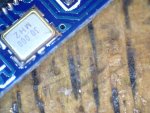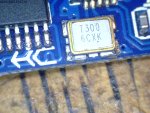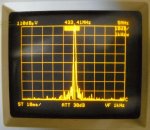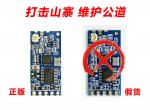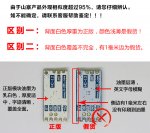Hi everyone.

@ Phil: Could I please send you a clone module that is failing the test here, and can you please measure it's crystal? I tried to to do it here, but my frequency counter is loading the oscillator and stuffing up the results. I also have now started soldering the modules in, on the reverse of the PCB with the helical(to protect it, mainly), so it is a real pain.

I have a 2GHz spectrum analyser, so I will try to measure the crystal with that if I get time in the next few days - assuming you can with a spectrum analyser. I have a feeling that the analyser will also load down the oscillator and give false results, which is why I ask if you can measure one I have here, as you have already done it with working ones on your scope.

Re. your 37kHz question - yes, I believe so. For narrowband, the frequency needs to be really, really close to what it should be, or you will miss data packets. With crystals and PLL these days, that is not a problem. WIDEBAND radios would not care about this so much, as they use much more bandwidth when they transmit, and the receivers are usually also pretty wide in their receiving ability, so their frequency can be off quite a bit at each end, but they will still work. Narrowband is a different kettle of fish. The PDF for the RF chip confirms that these modules are indeed a narrowband device.
Re. your distance question - no, about 2-meters apart. I have tried adding distance, as it has been suggested by others in the know, that modules close together can actually misbehave, as the TX RF can overload the receiver in the other one, as the field is so strong. Distance made no difference.
@ reginald: Believe it or not, that is very nice to know - for me, anyway. This means that YOU are experiencing exactly the same issue with mixed modules on the same setting that I am over here. Your testing and module swapping is giving the EXACT same results as I am getting here. I feel better now knowing someone else can indeed reproduce the situation I am seeing.

I think you would find that the 30.000MHz modules as a pair or network, will work just fine. But mix them with the genuine ones, and you're in big trouble.

